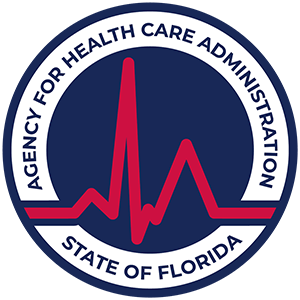Teenage Drug Abuse Statistics & Facts Exposed: The Alarming Truth
Unmask the stark reality of teenage drug abuse statistics & facts and their impact on young lives.
Teenage Drug Abuse Statistics
As a cornerstone issue in public health, understanding teenage drug abuse requires comprehensive knowledge of the current landscape. This includes understanding the prevalence of youth drug abuse and the most commonly abused substances among this demographic.
Prevalence of Youth Drug Abuse
A significant number of teenagers engage in drug abuse, highlighting the urgency of addressing this issue. According to the National Center for Drug Abuse Statistics, at least 1-in-8 teenagers have abused an illicit substance in the last year. This alarming statistic underscores the necessity for proactive measures in preventing and addressing youth drug abuse.
Additionally, nearly 24 million Americans used illegal drugs within the past month, which is almost 10 percent of the population of the United States. This prevalence of drug abuse extends to children's lives, irrespective of socioeconomic status.

Most Commonly Abused Substances
Understanding the types of substances most commonly abused by teenagers can shape the approach to prevention and intervention. The National Center for Drug Abuse Statistics reports that alcohol and marijuana are the most commonly abused substances among teens and young adults.
Meanwhile, there is a concerning trend among youth abusing prescription stimulants more than illicit substances like cocaine or amphetamines. This pattern reflects a shift in the substances abused by teens and the need for increased awareness about the risks associated with prescription stimulant abuse.
The table below provides a snapshot of the most commonly abused substances among teenagers:
These teenage drug abuse statistics & facts shed light on the magnitude of the problem and the substances most frequently involved. This knowledge is a critical step towards formulating effective strategies and interventions to address the issue of drug abuse among teenagers.
Factors Influencing Teen Drug Abuse
There are several factors that influence teen drug abuse, including parental knowledge, peer substance use, and socio-demographic variables. Understanding these factors can help in developing effective strategies to prevent and treat substance abuse among adolescents.
Influence of Parental Knowledge
Parental insight plays a significant role in teenage drug use. Maternal knowledge and paternal knowledge have both direct and indirect influences on adolescent substance use, with maternal knowledge having a stronger association.
However, older adolescents tend to report less maternal and paternal knowledge. This can potentially increase their susceptibility to substance use as there is less parental oversight and understanding of their behaviors.
Impact of Peer Substance Use
Peer influence is a critical factor in teen drug abuse. Substance-using peers are among the strongest predictors of adolescent substance use. Adolescents may be more likely to engage in substance use if they are in the company of peers who are also using substances, due to a desire for social acceptance or perceived normalization of drug use.
Socio-Demographic Variances
Socio-demographic factors also play a pivotal role in teenage drug abuse. Adolescents from intact families are less likely to use substances than those from non-intact families, and this difference is mediated by parental and peer variables such as parental knowledge and peer substance use.
Parental knowledge and peer substance use mediate the socio-demographic variability in adolescent substance use, including differences in grade, race/ethnicity, and family structure.
Understanding these factors can assist in tailoring prevention and intervention strategies to address teenage drug abuse effectively. By focusing on these areas, parents, educators, and healthcare providers can work together to reduce the impact of these influences and help teens make better choices regarding substance use.
Substance-Specific Statistics
In the realm of teenage drug abuse statistics and facts, it's crucial to delve into the specifics of substance use trends among teens. By understanding these patterns, we can better strategize prevention and intervention methods.
Alcohol Abuse Trends
Alcohol is the most commonly abused substance among teens and young adults, indicating a high prevalence of alcohol abuse in this demographic. While underage drinking is illegal, it remains a significant issue, necessitating continued education and prevention efforts.
Marijuana Usage Patterns
Marijuana usage among youth is increasingly prevalent, making it one of the most commonly used illicit substances in this demographic [3]. The increasing acceptance and legalization of marijuana in various states may contribute to these rising usage rates.
Opioid Epidemic Concerns
The opioid crisis is recognized as a national public health emergency, underscoring the severity of this issue among youth and the general population. Addressing opioid misuse among teens requires a multi-faceted approach, including prevention, treatment, and policy interventions.
Prescription Stimulant Abuse
Prescription stimulant abuse among teens is a concerning trend. Youth are more inclined to abuse these substances compared to cocaine or amphetamines. The misuse of these medications, often obtained through illegal means, poses significant health risks.
These statistics underscore the need for continued vigilance and comprehensive efforts to prevent and tackle substance abuse among teens. Understanding these substance-specific trends will aid in the development of targeted interventions and policies to address teen drug abuse.
Teen Drug Abuse Trends
In evaluating teenage drug abuse statistics & facts, it's important to understand the prevalent trends in adolescent substance use. These trends help in shaping effective prevention and intervention strategies.
Declining Illegal Drug Use
Recent trends indicate a decline in the use of illegal drugs among teenagers. The use of illegal drugs, excluding marijuana, is lower than it has been in over two decades among youth. In 2022, the reported use of any illicit drug within the past year remained at or significantly below pre-pandemic levels for all grades, with 11% of eighth graders, 21.5% of 10th graders, and 32.6% of 12th graders reporting any illicit drug use in the past year.
Despite this decline, it's important to note the alarming rise in overdose deaths among young people ages 14-18, largely attributed to illicit fentanyl contaminating the supply of counterfeit pills resembling prescription medications.
Trauma and Substance Use
A significant correlation has been identified between trauma and substance use among teenagers. Adolescents who have experienced potentially traumatic incidents prior to the age of 11 are more likely to use marijuana, cocaine, and prescription drugs. They are also more likely to use drugs in general or experiment with multiple drugs. This indicates the crucial role of early intervention and trauma-informed care in preventing substance abuse among at-risk youth.
Impact of Legalization on Marijuana Use
Contrary to some beliefs, marijuana use among teenagers has not increased in response to laws legalizing recreational marijuana use in certain states. In fact, less than 6% of 12th-grade students use marijuana every day, indicating a decline in use [4].
These trends in teen drug abuse are a vital part of the broader discussion on substance abuse prevention and treatment. Understanding these patterns can help policymakers, educators, and health professionals design more effective strategies to combat drug abuse among teenagers.
Health Effects of Teen Substance Abuse
Substance abuse during the teenage years can have long-lasting impacts, affecting an individual's cognitive function, physical health, and social and professional life. The following sections explore these issues in more detail, providing a glimpse into the alarming consequences of teenage drug abuse.
Cognitive Impacts
Substance abuse can negatively impact healthy cognitive function in adults as a result of impaired brain development during the crucial teenage years [6]. Chronic substance use is associated with various cognitive effects such as changes to brain function, memory, behavior, learning, and concentration. Substance Use Disorder (SUD) can impact a person's cognitive function and behavior, with effective treatment aiming to address all mental and physical health needs of individuals struggling with SUD.
Physical Health Risks
Substance abuse among teens can have long-term consequences on their physical health. Drug misuse can lead to serious health consequences including overdose and death, with specific effects varying based on factors like the type of substance, dosage, delivery method, and duration of use.
Social and Professional Repercussions
Substance abuse among teens can have social and professional repercussions beyond biological and physiological effects, which could persist into adulthood [6]. It can hinder their educational and career prospects, strain relationships with family and friends, and contribute to a cycle of addiction and dependency. Treatment programs should help individuals develop healthier relationships with drugs and lead productive lives in various aspects such as family, work, and society.
By understanding the significant health effects of teen substance abuse, it's clear that preventive measures, early intervention, and comprehensive treatment are imperative in addressing this critical issue. This evidence further underscores the importance of awareness, education, and action in tackling the pressing issue of teenage drug abuse.
Racial Disparities in Substance Use
When discussing teenage drug abuse statistics, it's crucial to consider the racial disparities that exist within this issue. Substance Use Disorder (SUD) prevalence and the impact of historical policies can shed light on the nuances of drug use trends among different racial groups.
SUD Prevalence Among Different Races
The prevalence of Substance Use Disorder (SUD) varies among different racial groups. It has been observed that SUD is more common among Black people than Hispanics, Asians, and White individuals, with higher prevalence in males among various racial groups in the United States.
The 2022 Monitoring the Future data tables revealed the following racial breakdown of 12th grade students who took the survey:
This data further emphasizes the need for equitable access to prevention, intervention, and recovery services for all individuals, regardless of race or ethnicity.
Impact of Historical Policies
The historical impact of systemic racism and discriminatory policies has greatly contributed to today's racial disparities in substance use and addiction rates. For example, the "war on drugs" policies disproportionately targeted minority communities, leading to higher rates of incarceration and perpetuating racial disparities in substance use and addiction treatment [9].
Moreover, the impact of historical trauma and ongoing systemic racism can contribute to higher rates of substance use and addiction among marginalized communities. This underscores the importance of addressing social determinants of health and implementing culturally competent approaches to prevention and treatment.
Racial and ethnic disparities in substance use and addiction treatment outcomes highlight the need for comprehensive and inclusive approaches that address the underlying social, economic, and environmental factors contributing to these disparities [8].
In conclusion, understanding the racial disparities in teenage drug abuse is crucial in formulating effective and inclusive prevention and intervention strategies. By acknowledging and addressing the impact of historical policies and systemic racism, we can begin to close the gap and ensure equitable substance use and addiction treatment for all.
Opioid Crisis Statistics
The opioid crisis remains a significant public health concern and contributes significantly to the overall picture of teenage drug abuse statistics & facts.
Overdose Rates in the US
The impact of the opioid crisis can be seen clearly in overdose rates. Since 1999, more than 760,000 people have died from opioid overdoses in the United States. This statistic gives a sobering perspective on the magnitude of the crisis and the lives it affects. The data reflects the devastating impact of opioids, making them a major contributor to drug-related deaths in the country.
Link to Illegal Opioid Use
When examining the link to illegal opioid use, it is important to note that two out of three overdoses in 2018 were linked to opioid use. This alarming fact highlights the significant public health issue posed by illegal opioids, which can result in overdose and death.
The crisis primarily stems from illegal or "street" drugs rather than prescription opioids, indicating a shift in the source of opioids. This shift underscores the importance of addressing the issue from multiple angles, focusing not only on prescription drug abuse but also on the illegal drug market.
These statistics expose the alarming reality of the opioid crisis and its impact on the youth. By understanding these trends, policy-makers, educators, and parents can develop strategies to effectively address this issue and prevent further loss of life.
Psychological Effects of Substance Abuse
Substance abuse, particularly among teenagers, has profound psychological impacts that may extend beyond the initial high. The effects range from alterations in cognitive function to significant behavioral changes.
Impact on Cognitive Function
Substance Use Disorder (SUD) can severely impact cognitive function, leading to changes in brain function, memory, learning, and concentration. Chronic substance misuse is associated with these detrimental effects, with the severity and specifics varying based on factors like the type of substance, dosage, delivery method, and duration of use.
Teenagers are particularly vulnerable to these impacts. Substance abuse can result in impaired brain development during these crucial years, negatively affecting healthy cognitive function in adulthood.
Behavioral Changes
Alongside cognitive effects, substance abuse can also trigger significant behavioral changes. These changes often manifest as increased risk-taking, lack of motivation, emotional instability, and social withdrawal.
Such behavioral alterations can have social and professional repercussions that extend beyond the biological and physiological effects of substance abuse. The impacts may persist into adulthood, affecting the individual's ability to maintain healthy relationships, hold down a job, or function socially [6].
Effective treatment for SUD aims to address both the mental and physical health needs of individuals struggling with substance misuse. Comprehensive programs should aid individuals in developing healthier relationships with drugs and leading productive lives in various aspects such as family, work, and society.
Understanding these psychological impacts is crucial for the development of effective prevention strategies and treatment programs. By shedding light on these teenage drug abuse statistics & facts, it is hoped that more teenagers can be steered away from the harmful path of substance abuse.
Nationwide Drug Use Trends
A critical component of understanding the broader context of teenage drug abuse is to examine the nationwide trends of illicit drug use and the most commonly abused substances among teens. These figures provide a snapshot of the pervasiveness of this issue among the youth population.
Prevalence of Illicit Drug Use
Statistics reveal that at least 1-in-8 teenagers have abused an illicit substance in the last year. This alarming figure underscores the significant prevalence of youth drug abuse as a public health concern [3].
On a positive note, according to The Recovery Village, teen drug use rates are declining, with the use of illegal drugs aside from marijuana being lower than it has been in over twenty years among youth. Yet, nearly 24 million Americans used illegal drugs within the past month, which is almost 10 percent of the population of the United States. These studies indicate that drug abuse is prevalent in children's lives, irrespective of socioeconomic status.
Commonly Abused Substances in Teens
When it comes to the substances most commonly abused by teens, alcohol tops the list, indicating a high prevalence of alcohol abuse in this demographic [3].
Marijuana is also prevalent among youth, being one of the most commonly used illicit substances by this demographic. Interestingly, marijuana use in teens has declined despite laws legalizing recreational marijuana use in some states. According to statistics, less than 6% of 12th-grade students use marijuana every day [4].
Prescription stimulant abuse among teens is a concerning trend, with youth more inclined to abuse prescription stimulants compared to cocaine or amphetamines. For instance, teen prescription drug abuse can involve narcotic painkillers such as Vicodin and OxyContin. According to NIDA, 3.4% of 12th-grade students have used prescription drugs within the past year [4].
Lastly, the opioid crisis has been recognized as a national public health emergency, underscoring the severity of this issue among youth and the general population. The growing prevalence of opioid abuse among teens is a cause for concern and emphasizes the need for targeted interventions and prevention strategies.
These nationwide trends provide a sobering overview of the prevalence of illicit drug use among teenagers and the substances they most commonly abuse. Understanding these trends is crucial for developing effective strategies to combat teenage drug abuse and promote healthier choices among youth.














.svg)








